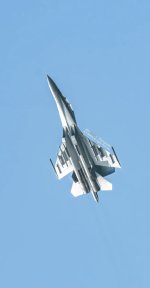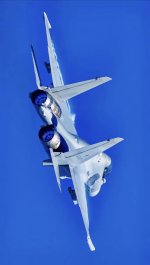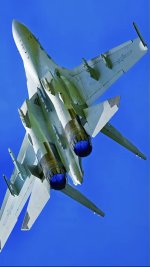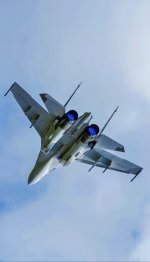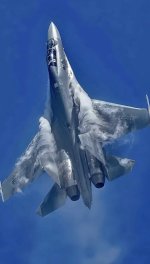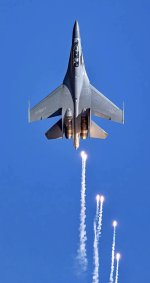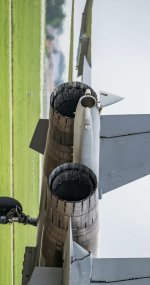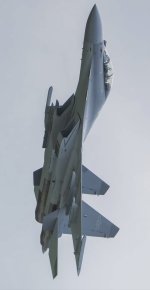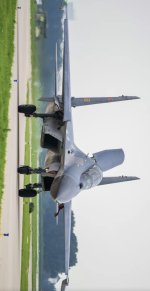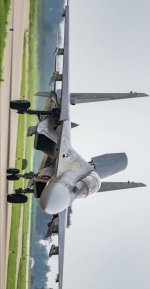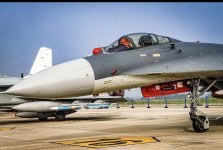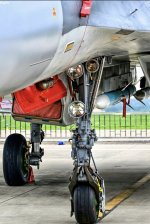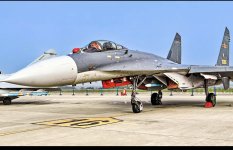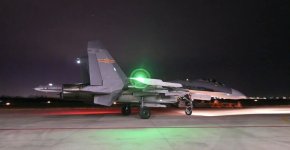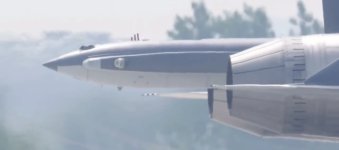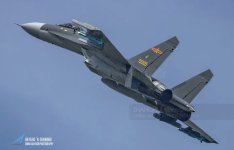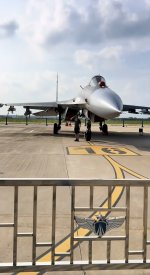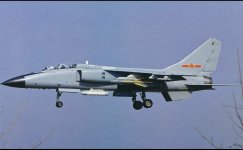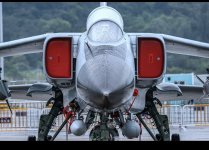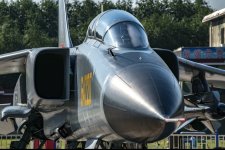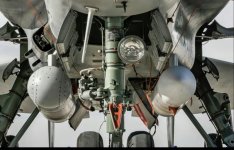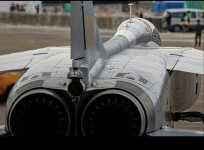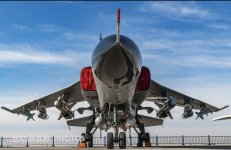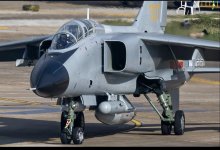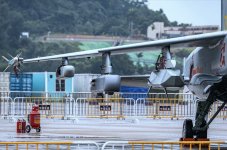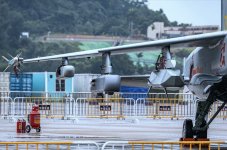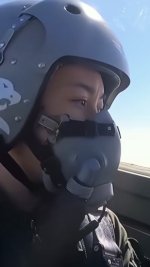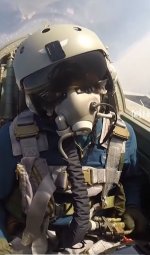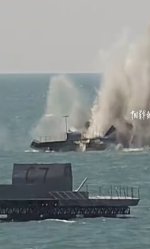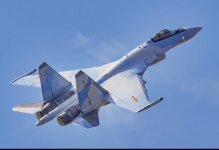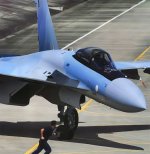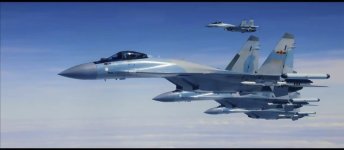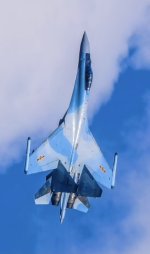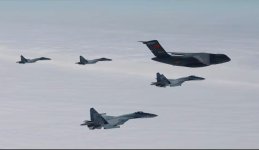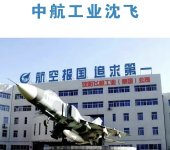Fatman17
THINK TANK: CONSULTANT
- Apr 24, 2007
- 37,383
- 43,757
- Country of Origin

- Country of Residence

CHINA’S EXPANDING EW CAPABILITIES
- Aviation Features
- CHINA’S EXPANDING EW CAPABILITIES
By Andreas Rupprecht 6th September 2018
FEATURE
The Y-8GX-6 and KQ-200 are providing China’s military with new capabilities, and are becoming available in increased numbers. Naval units are also now equipping with these clandestine aircraft.

This is a Y-8GX-6, which is thought to have entered service in 2015.
ELECTRONIC WARFAREFLEW and special mission aircraft may not be as sleek and exciting as fighters, but when it comes to real operations their role cannot be underestimated. Away from the public gaze, China is constantly expanding its capabilities in this area.
Following a few early variants of dedicated Y-8 special mission aircraft, the Y-8 evolved within the People’s Liberation Army Air Force (PLAAF) and PLA Naval Aviation as a mainstay for special roles in the same vein as the C-130 Hercules or C-135 did for the US military. Their missions currently range from EW to electronic intelligence (ELINT), from signals intelligence (SIGINT) to offensive electronic countermeasures (ECM), and from airborne early warning (AEW) and psychological operations to antisubmarine warfare (ASW).
All of these types were initiated under the so-called ‘Gao Xin’ (High New) project. Understandably, only scant information is available about the history of individual versions or even their specific mission equipment. In most cases, little was known about any such projects until a new Y-8GX version was first seen. Although the versions are numbered sequentially from GX-1 to GX-12, they were not revealed in sequential order.
Chinese ASW Especially for PLA Naval Aviation, the most eagerly awaited special mission variant is the Y-8Q/KQ-200 ASW aircraft. The type is also known as the Y-8GX-6 and is reported to have been under development since 2007 using the proven Y-8F-600, which features a pressurized cabin, uprated WJ-6C turboprops fitted with JL-4 six-blade propellers and small vertical stabilizers on the horizontal tailplanes. It has a prominent bulbous radome housing a surface search radar and most notably a distinctive magnetic anomaly detector (MAD) tail boom. Under the forward fuselage is an additional electro-optical turret housing a forward-looking infra-red, CCD TV camera and laser range-finder, while there are several radar warning receiver and missile approach warning sensors as well as numerous blade antennas, and two large observation windows are situated in the rear fuselage.
The most important addition is an internal weapons bay in front of the main landing gear. It can carry depth charges and up to eight Yu-7 or new Yu-11K light torpedoes. The aircraft may also be armed with up to four YJ-83K or YJ-9 anti-ship missiles under the wings.
On the rear fuselage, aft of the internal weapons bay, the KQ-200 shows four launch tubes for dropping sonobuoys. As a dedicated long-range ASW aircraft it is said to have a range of up to 5,000km and a patrol endurance of up to 10 hours. The KQ-200 allegedly features a secure datalink to enable long-range communications and extended reach.
Two prototypes were built. They were first seen in November 2011 at the CFTE flight test establishment at Xi’an Yanliang carrying serials 731 and 732. Operational testing began in late 2013 and a first serial production aircraft was seen in February 2015. Finally, it was confirmed in April 2015 that the initial two aircraft had entered service with Southern Theater Command based at Lingshui in Hainan. As many as eight additional examples had entered service by early 2018 and production continues.
Interestingly, they are operated alongside a similar number of KJ-500H AEW aircraft from the same base as well as the Y-8GX-8 EW variant. These types have been noted at several other bases within Northern and Eastern Theater Commands, probably for familiarization purposes.

A fabulous shot of a 9th Naval Air Division KJ-500H, serial 85091. Images via Chinese internet

A close-up view of the Y-8GX-6’s bulbous radome, which houses a surface search radar.

Current EW and AEW variants
The two new special mission variants are the Y-8GX-8 (Y-9JB ELINT) and the KJ-500H AEW platform. The Y-9JB was unveiled in April 2011 at the CFTE and it too is based on the latest Y-8. Little is known about this aircraft, which features four large rectangular-shaped fairings on both sides of the forward and rear fuselage — reminiscent of an EP-3E. This has led to the speculation that it is an ELINT aircraft. Several smaller radomes are fitted on the wingtips, on top of the mid-fuselage, on top of the vertical tail fin, and underneath the nose as well as the nose/tail cone. The Y-9JB also has an EO turret underneath the fuselage for surveillance purposes.
Following testing between 2011 and 2013, it entered service in early 2012. So far, seven to eight examples are operational within Northern and Southern Theater Commands and are routinely seen flying missions.
The final member of the ‘New High’ family in Naval Aviation service is the KJ-500H (also known as the HJ-500). This type has been under development since the late 2000s and is a mediumsized AEW aircraft. In contrast to its predecessor, the KJ-200, the characteristic ‘balance beam’ radar has been replaced by a more traditional fixed rotodome containing three active electronically scanned arrays (AESAs) arranged in a triangular configuration. The radar is allegedly a new system developed by the 38th Institute, which uses the latest digital radar technology. Similar to other members of the family, this variant features enlarged nose and tail radomes which could house additional radar antennas to cover both the forward and rear hemispheres. It borrows from the Y-9JB in having the same two rectangular fairings housing ELINT antennas on both sides of the rear fuselage.
Only two KJ-500 prototypes had been built by late 2013 and the first serial aircraft entered service within the PLAAF at the end of 2014. In April 2015, images confirmed that the PLANAF has taken delivery of the first two KJ-500Hs. By mid-2018, at least eight were in service within two naval air divisions and production is ongoing. Moreover in April 2018, a modified variant fitted with an in-flight refueling probe performed its maiden flight.
The future
There has been considerable speculation as to how many aircraft of these types Chinese Naval Aviation will procure. One theory might be that the naval air arm has re-established some of its previously disbanded divisions as dedicated special mission units. Given the latest observations of KJ-500Hs assigned to the newly formed 3rd Naval Air Division (NAD) in Southern Theater Command, it makes sense for the aircraft so far on the strength of the 9th NAD to have probably been reassigned from elsewhere. Similarly, assignment to the 1st NAD within Eastern Theater Command appears to be confirmed thanks to new imagery.
While the structure of China’s reformed Naval Aviation is still not entirely clear, it is obvious that the electronic support role will play an important part in its operational mandate.
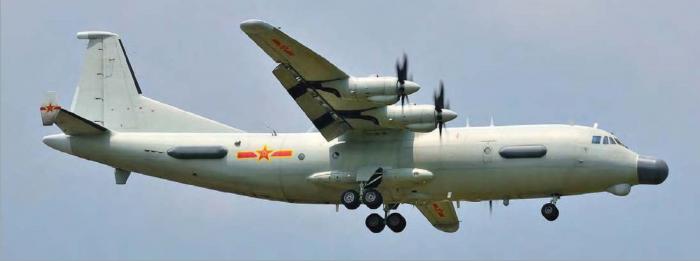
Left and right side views of a Y-8GX-8 (Y-9JB) ELINT aircraft, which is thought to fulfill a similar role to the US Navy EP-3E.

Originally published in Combat Aircraft Journal
Source:
Not Applicable
Not Applicable

